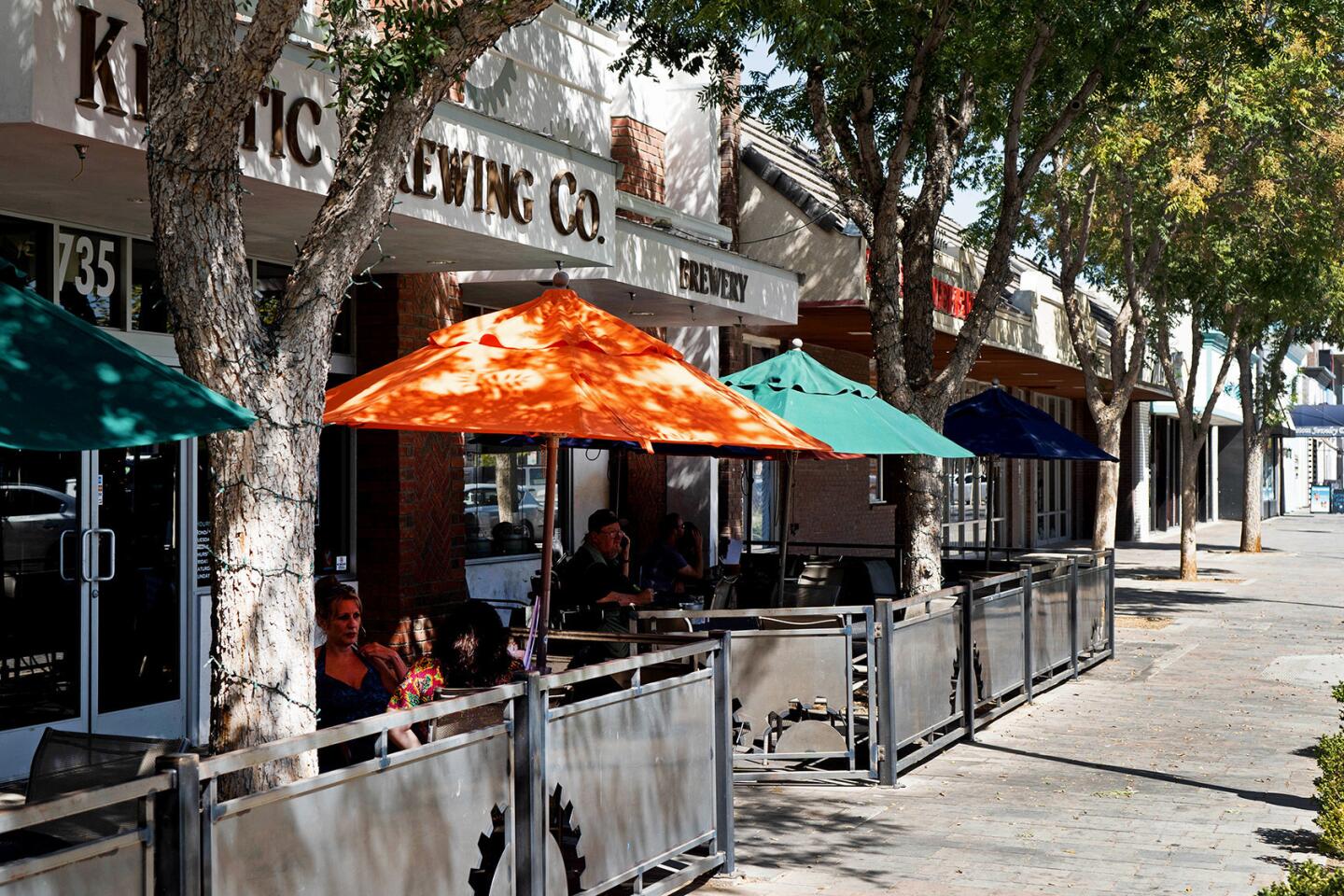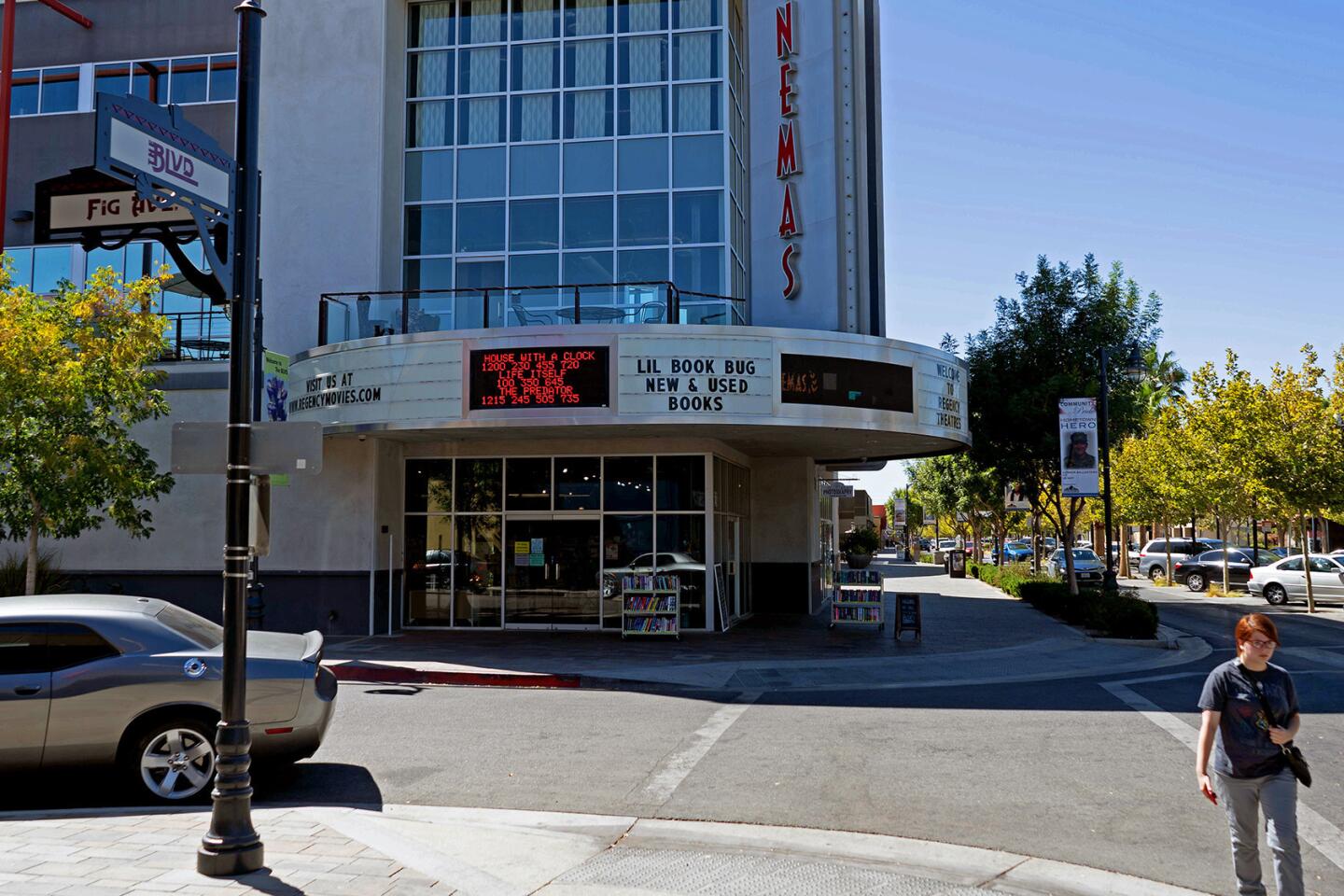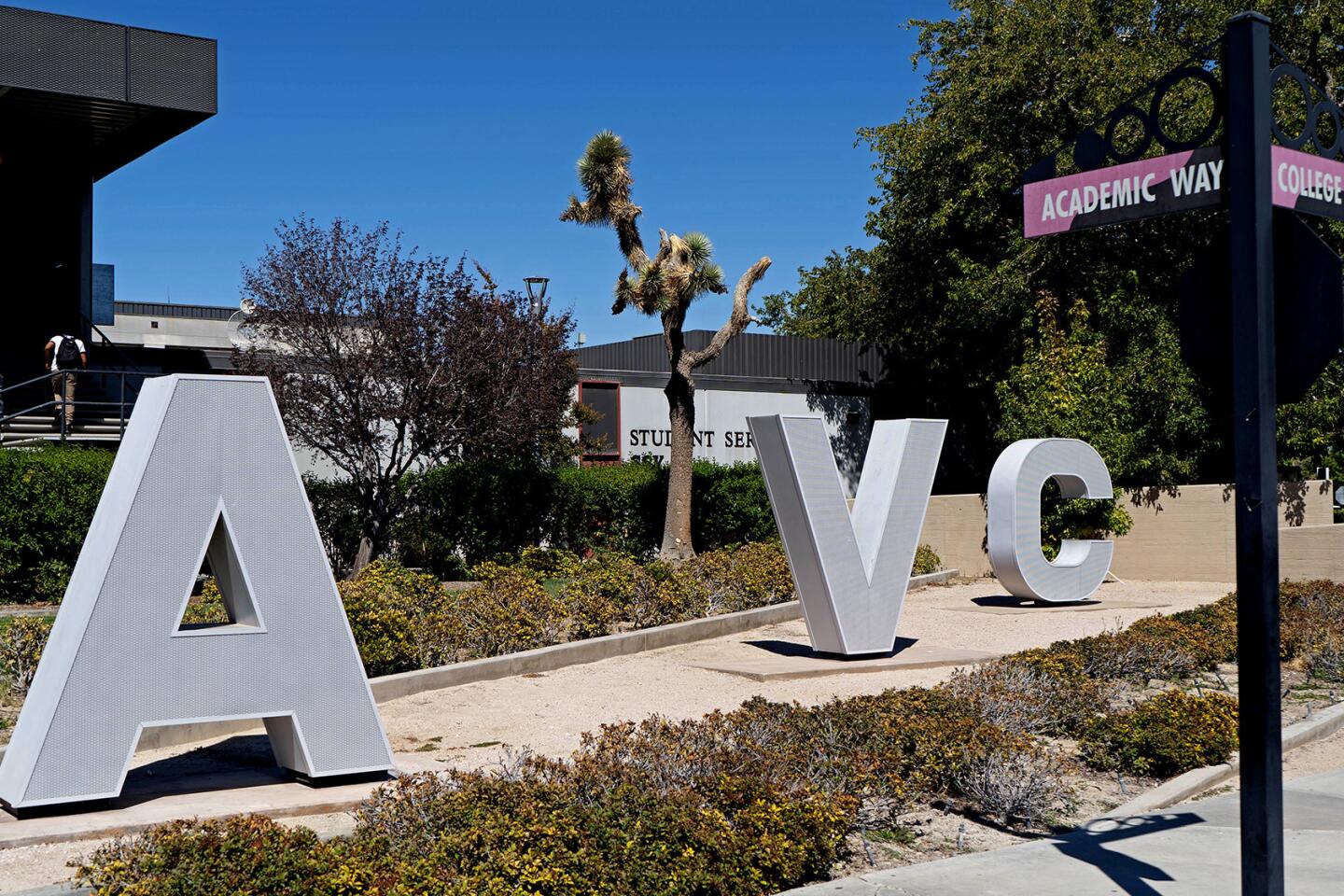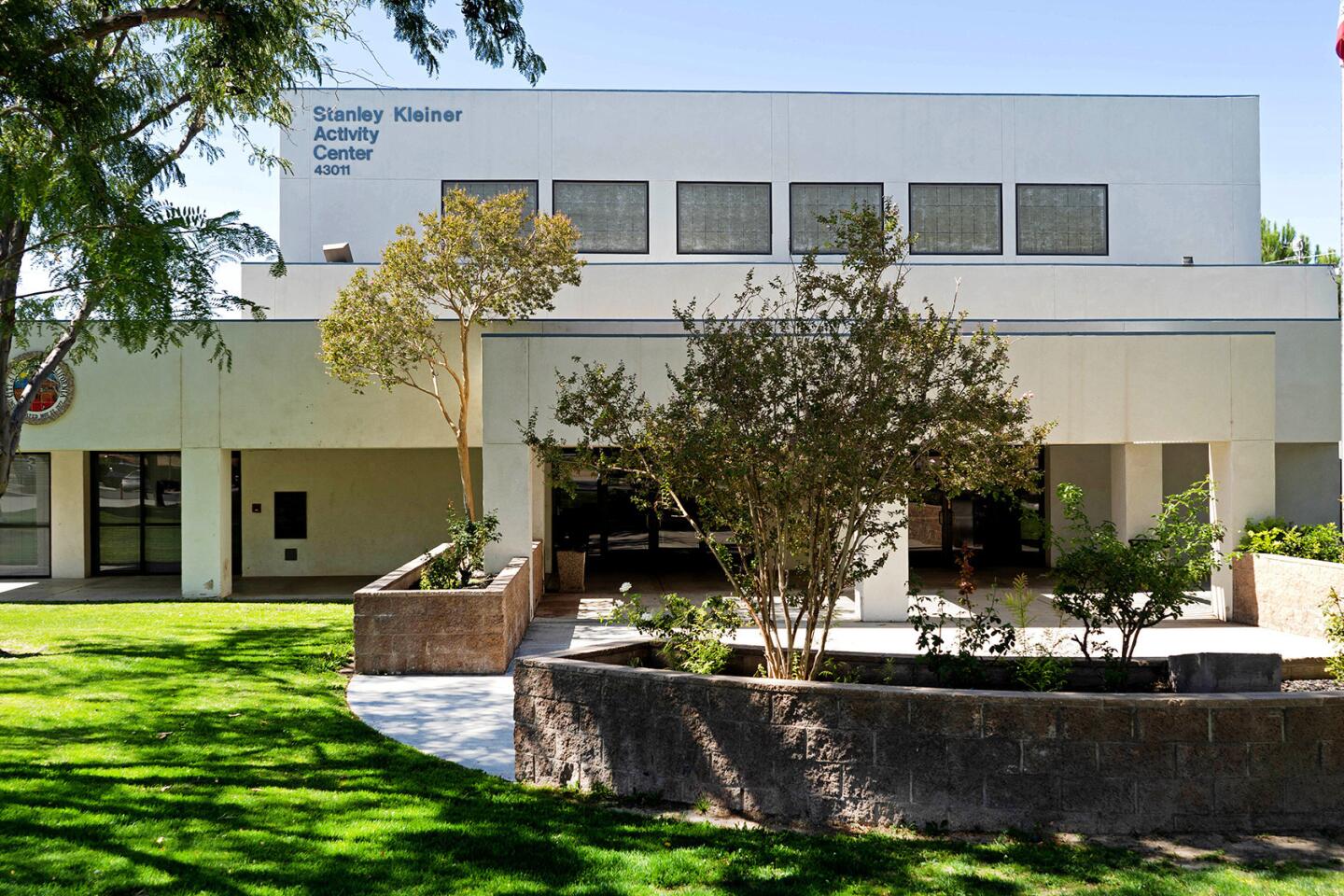Neighborhood Spotlight: Aerospace and water make up what Lancaster is today
- Share via
Although Lancaster is located in the high desert plains of the Antelope Valley, it owes its existence to water.
Beneath the surface of the valley floor lies an extensive system of aquifers, which for tens of thousands of years has collected runoff from the surrounding Tehachapi and San Gabriel Mountain ranges.
In 1876, the presence of aquifer-fed springs in the area led the Southern Pacific Railroad to establish a watering station there. It was a critical waypoint for engines running on the San Francisco-Los Angeles line, where they could stop to take on water before climbing, or after descending, the 2% grade of the Tehachapi Loop.
Around the station a community sprang up, as hotels were opened to service passengers on the train and the railroad built housing for its employees; it was probably a functionary of the Southern Pacific, tasked with naming new depots, who christened the town Lancaster. But any specific records were lost in a 1906 fire, according to the city’s official history.
The town had the good fortune of being founded during an unusually rainy period in the valley’s history. The seeming abundance of water that fell from the sky and could be pumped from the ground led to Lancaster and environs becoming a major agricultural center.
Cattle ranches, bean and barley fields and groves of water-hungry almond trees sprawled across the rich alluvial plains, as eager homesteaders flocked to Lancaster to farm the land.
A crippling decade-long drought brought an abrupt end to the uncharacteristically Edenic conditions in 1894. Ranching and farming all but ceased until the opening of the Los Angeles Aqueduct brought a new source to irrigate the valley in 1913.
In the 1930s, the Army Air Corps opened Muroc Air Base outside of town, the first step toward the defense and aerospace industry’s dominance of the Lancaster economy.
After World War II, the facility was renamed Edwards Air Force Base. It was there that Chuck Yeager broke the speed of sound (two years before the name change), military jets from the F-100 fighter to the latest stealth bombers were tested, and the space shuttle landed 54 times.
The economic impact of Edwards on Lancaster is hard to overestimate. The base provides more than 10,000 jobs in the area, and aerospace giants such as Northrop Grumman and Lockheed Martin also provide thousands of local jobs.
Most recently, private space ventures including Virgin Galactic and Scaled Composites have made the nearby Mojave Air & Space Port home, ensuring that Lancaster will continue to be central to the future of the aerospace industry.
Neighborhood highlights
The Right Stuff: Whether you work in the aerospace industry, really love jets and rockets, or both, Lancaster has you covered with its numerous air and space employers and historic aviation sites.
Explore the high desert: From hiking through stunning poppy blooms to riding an ATV on rugged off-road trails, the desert landscape of the Antelope Valley provides plenty of recreation activities.
Bargain shopping: If you’re willing to join the ranks of the super commuters, Lancaster boasts four-bedroom new construction homes in the low $400s, and older homes at far less than that.
Neighborhood challenges
Exurban living: Until (or if) the high speed rail line makes its way to Antelope Valley, the commute from Lancaster may be too much for all but the most dedicated would-be desert dwellers.
Expert insight
Karen Senia, a Century 21 real estate agent with 24 years of experience in the area, said that beyond the affordability, Lancaster’s room for expansion and development sets it apart from the pack.
“For a while, inventory was low, and prices shot up,” Senia said. “But now with more inventory, you can purchase a home here for $400,000 that would be at least $900,000 in other areas of L.A. County.”
Ranches and Spanish-style abodes are common, but newer homes take on a more traditional feel. Usually, estates feature plenty of acreage; many properties are equestrian-zoned.
Beyond the traditional aerospace titans in the area, a recent boon for Lancaster has been BYD, a battery and electric vehicle company. BYD recently completed a 100,000-square-foot warehouse in the city, and Senia said the firm hires locally.
Market snapshot
The majority of Lancaster falls into three ZIP Codes: 93534, 93535 and 93536.
In August, the 93536 ZIP Code saw the most home transactions. Based on 119 sales, the median sales price for single-family homes was $350,000, up 6.1% year over year, according to CoreLogic.
Report card
Of the 30 public schools within the Lancaster boundaries, standouts include SOAR High (Students On the Academic Rise), which scored 937 on the Academic Performance Index, and Joe Walker Middle, which scored 821.
The three largest high schools in the area are Quartz Hill High, Lancaster High and Eastside High. They scored 782, 723 and 658, respectively.
Times staff writer Jack Flemming contributed to this report.
More to Read
Sign up for Essential California
The most important California stories and recommendations in your inbox every morning.
You may occasionally receive promotional content from the Los Angeles Times.










